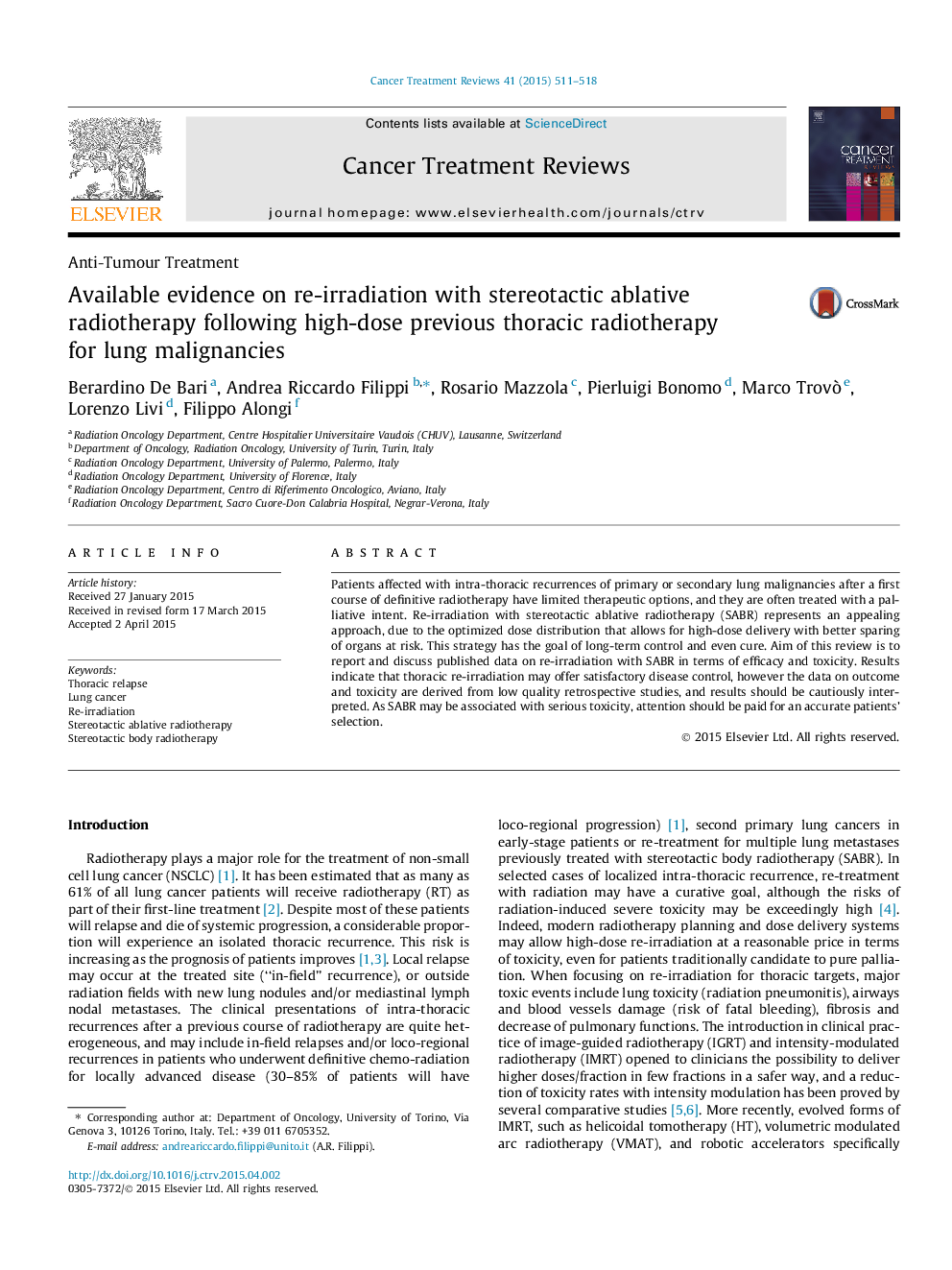| Article ID | Journal | Published Year | Pages | File Type |
|---|---|---|---|---|
| 3979748 | Cancer Treatment Reviews | 2015 | 8 Pages |
•Re-irradiation with SABR provides encouraging tumor control rates, with an acceptable toxicity profile.•The major risk is radiation pneumonitis, occurring in around 20% of patients, and is associated to excess dose to lungs.•Fatal toxic events may occur, especially when treating centrally located tumors.•No conclusions on SABR role should be drawn as the data are all retrospective.
Patients affected with intra-thoracic recurrences of primary or secondary lung malignancies after a first course of definitive radiotherapy have limited therapeutic options, and they are often treated with a palliative intent. Re-irradiation with stereotactic ablative radiotherapy (SABR) represents an appealing approach, due to the optimized dose distribution that allows for high-dose delivery with better sparing of organs at risk. This strategy has the goal of long-term control and even cure. Aim of this review is to report and discuss published data on re-irradiation with SABR in terms of efficacy and toxicity. Results indicate that thoracic re-irradiation may offer satisfactory disease control, however the data on outcome and toxicity are derived from low quality retrospective studies, and results should be cautiously interpreted. As SABR may be associated with serious toxicity, attention should be paid for an accurate patients’ selection.
